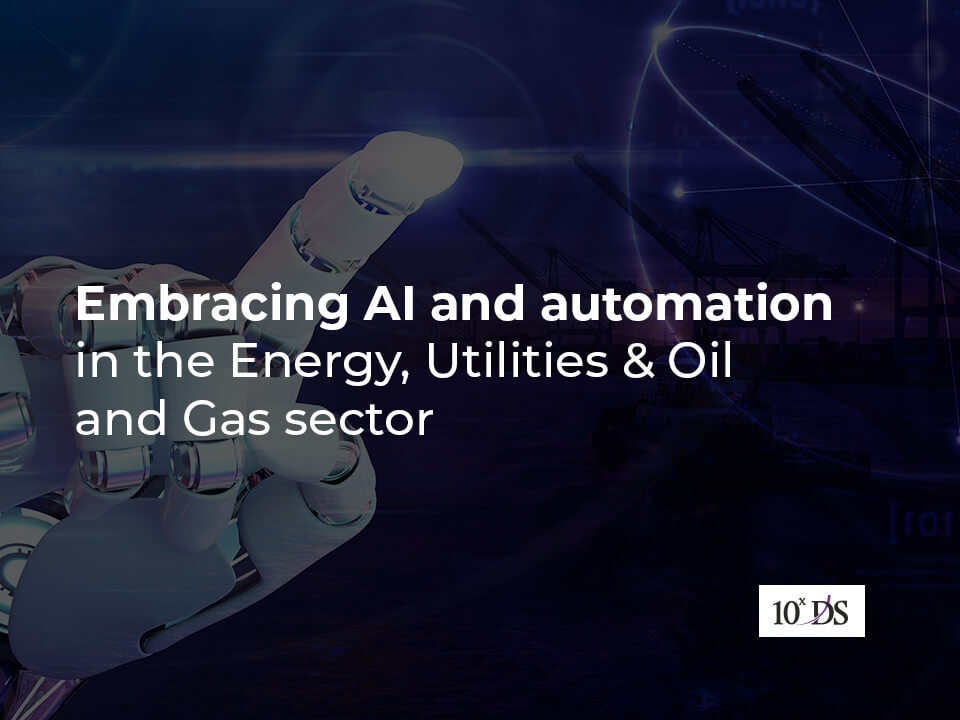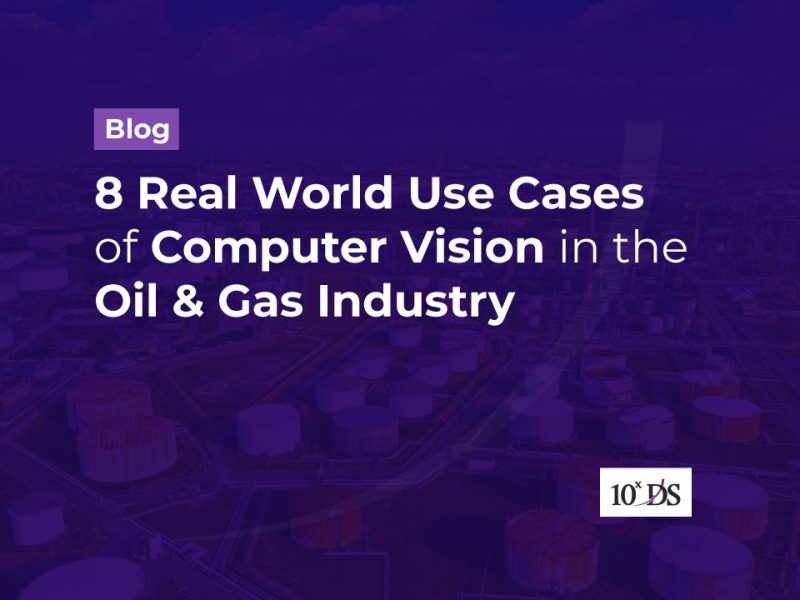
Embracing AI and automation in the Energy, Utilities & Oil and Gas sector
The common notion that the energy and utilities industry have huge infrastructure, mainly in the physical, not much in the digital, is changing. From Oil and Gas providers to power and electric grids, the energy, Oil and Gas and utilities sector is proving to be one of the most innovative industries in its use of emerging technologies like Artificial Intelligence, hyperautomation, advanced analytics and more. The industry has been making significant strides in driving digitization and digital transformation over the years. Among all the emerging technologies, much of the disruption in the foreseeable future will come in the form of AI, and intelligent automation or hyperuatomation. In fact, they are already at play within the energy enterprises.
In a recent survey conducted by PwC, several businesses are beginning to use AI applications to gain maximum out of the data collected, especially the pandemic scenario has accelerated these efforts for them. According to the survey nearly one-third of energy executives say they have some processes that are fully enabled by AI and widely adopted in their business. Another one-third of the energy executives say they have already started implementing some AI use cases, though limited. Around two-thirds of those executives who were surveyed say they are realizing the benefits of AI, helping them create enhanced customer experiences.
How and why did AI gain prominence in the energy sector
AI and ML algorithms have allowed energy companies to cope with the uncertainty and variability that is common in the sector. Leveraging the performances and ability of AI-based systems, enterprises look to forecast, maximize the strengths, and reduce the flaws in areas like power generation, distribution, and trading processes. One of the major factors why AI has gained prominence in the energy industry is the fact that massive computational power is now available at a low cost and this power can now be harnessed to improve the training speed of deep learning algorithms. Another major reason is the dramatic increase in available data and storage capacity, providing enterprises with better training material for algorithms. Moreover, we are seeing more research happening in AI, worldwide, particularly in machine learning and deep learning.
AI Use Cases in Energy & Utilities sector
Here are some use cases in the energy sector, especially in the utilities and Oil & Gas:
1. Forecasting the energy load
Short-term load forecasts are crucial information to have for the utilities, and machine learning (ML) can be leveraged to predict supply in real time and optimize distribution. ML models are used to enhance forecasting activities and to stabilize severely fluctuating production, this is more pronounced when it comes to renewable energy sources such as wind and solar. Internationally, energy researchers are testing several models to see how they perform in varying conditions and locations to understand the most efficient ones.
AI also provides key insights on the demand side. One such example is AutoGrid which provides millions of forecast information in few minutes, optimizing several megawatts of power. The solution processes data collected from millions of customers and uses it to train machine learning algorithms that automatically detect supply and demand patterns and suggest necessary adjustments to energy enterprises.
When it comes to its use in trading, AI can provide accurate forecasts of next-day output, which is important for the success of financial market operations. Forecasting and optimization using AI can also help operators save millions of dollars in additional costs incurred or penalties for the mismatch between expected and actual energy outputs.
2. Optimizing power generation
Energy and power-providing companies have started incorporating AI in their operations to improve generation efficiency with automated real-time changes. For instance, the Autonomous Control Optimizer, an AI-based system, used in gas turbines uses real-time sensor data to check and monitor the conditions in the turbines. The system performs several tasks such as controlling the combustion process by using machine learning to continuously adjust fuel valves considering many internal and external factors and variables. Another upside to using this system is that the entire performance is enhanced, with an added advantage of lower emissions, especially a reduction in the nitrogen oxides that can be harmful to humans.
3. Enhancing distribution processes
As mentioned earlier, AI and ML algorithms offer useful tools to predict fluctuations in the energy load, which adapts energy distribution considering the variations. Automated power grids or smart grids help in monitoring and controlling consumer nodes, giving the power companies greater control and flexibility. The monitoring processes make use of a wide network of smart meters assigned to each consumer. Moreover, there are synchrophasors used to measure voltage and current at several points of the grid. Since these sensors collect key data, it allows the grid to adjust the flow of electricity, as and when necessary, thereby reducing the workload and in turn even the energy prices. AI also helps deal with energy storage issues. Intelligent storage units that leverage AI, especially machine learning, by creating models based on previously collected data, allows energy companies to manage these flows and store excess energy to restrict grid overloads.
4. Improve and manage maintenance tasks
AI helps the energy and utilities companies with the maintenance processes by using drones and robots to handle risky manual inspections. With the latest developments in sensors and signal processing systems, when powered by AI and Machine Learning algorithms, provide new avenues for efficient and rapid condition monitoring, previously non-existent. Condition monitoring processes analyse and examine several types of activities of power facilities and grids, collecting data by specific sensors and processing it through various machine learning-based methodologies and techniques to pre-detect issues and malfunctions before they create severe problems.
Oil & Gas Intelligent Automation use cases
We have covered a blog on our Oil & Gas use cases, and how 10xDS helped O&G companies capture the benefits of digitization. Oil companies across the globe have started embracing the latest technologies like AI, hyperautomation, advanced analytics and more. For instance, 10xDS helped a leading petroleum exploration company to streamline the process of downloading satellite images for hundreds of defined Area of Interest (AOI) from the vendor providing satellite imagery, geospatial information, and location-based intelligence. Our Intelligent Automation (IA) solution helped to enable 80% reduction in the average handling time. The automation also avoided the possibility of human failure to execute the process in defined schedules.
Another automation use case involves 10xDS optimizing the tender management process for procuring Mechanical, Electrical, Control & Automation materials of the O&G construction activities, for a leading O & G company. The process is now running smoothly, avoiding the risk of missing tenders, and enabling faster and timely closure of tender responses.
Conclusion
Though AI unlocks a huge untapped potential for energy, utilities and Oil & Gas sector companies, the industry has underestimated this potential to a large extent as several companies are struggling to scale their automation initiatives. However, the benefits of AI far outweigh its drawbacks. So, despite the current challenges the industry is facing, it is always best to look at the long-term benefits and therefore continues with this positive trend. This is the only way the industry can adapt to the new energy market and meet the challenges of tomorrow.
How 10xDS can help
10xDS has the experience and expertise in automating several upstream, midstream, and downstream processes for Oil & Gas companies. We can help you identify opportunities for digital transformation and maximize your ROI by leveraging emerging technologies. We have state-of-the-art technology CoEs, flexible solution deployment methodologies, and a full spectrum of offerings and services for every stage of an organization’s path to becoming an Autonomous Digital Enterprise.
Aiming to become a growth-oriented enterprise in the energy sector? Then talk to our experts to gear up to become an Autonomous Digital Enterprise.


